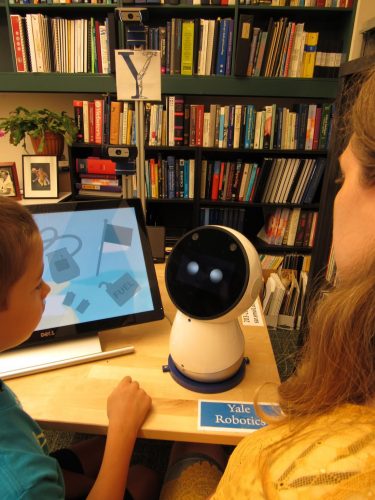We often take for granted our ability to detect social cues such as facial expressions and body language. For many children diagnosed with autism spectrum disorder (ASD), this social-communicative ability is not innate and instead must be learned. Unfortunately, most schools do not have effective programs to teach these skills to children with ASD. But what if the solution lies in the homes of the children? A ten million dollar collaborative project led by Brian Scassellati, Yale Professor of Computer Science, recently explored a new therapeutic approach that emphasizes personalization and on-demand access.
In the study, an autonomous robot ran thirty-minute skills-learning sessions every day for one month with each of twelve children and his/her caregiver. The sessions, which were tailored by the robot to the individual, consisted of games that fostered social and emotional understanding, perspective taking, and ordering. At the end of the in-home study, subjects showed improved eye contact, more attempts to initiate conversation, and more frequent responses to prompts. Significantly, they also exhibited progress outside of the sessions with people other than their caretakers.
The effects of the study diminished one month after it concluded, but Scassellati aims to make the gains more permanent by implementing the technology for longer durations and is optimistic about socially-assistive robot potential.
“In the home we had no control over the environment. These robots had to be very flexible and intelligent to deal with variations,” said Scassellati. Thus, if the robot can act within homes, it can act anywhere. While robots alone cannot replace human therapists, they can certainly reinforce the efforts of them.

